

Norwood Park in Nottinghamshire is the custodian of the original Bramley apple
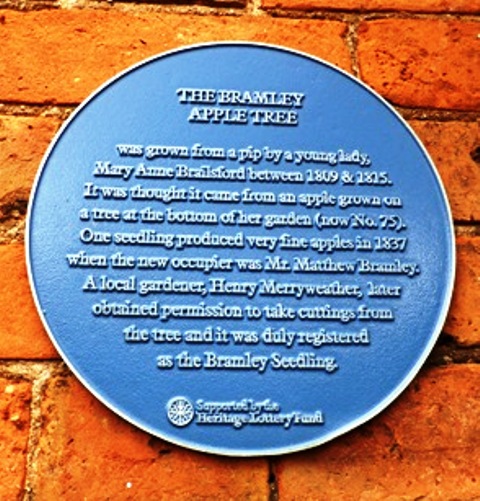 In early September, The English Apple Man visited Suzanne Starkey at Norwood Park Farm where her father Sir John Starkey planted a Bramley orchard to celebrate the Bicentennial of the Bramley Apple. In nearby Southwell, the original Bramley tree, planted as a seedling by Mary Anne Brailsford in 1809 is still producing apples; today Sir John Starkey keeps a watchful eye on the well being of this celebrated King of Culinary Apples.
In early September, The English Apple Man visited Suzanne Starkey at Norwood Park Farm where her father Sir John Starkey planted a Bramley orchard to celebrate the Bicentennial of the Bramley Apple. In nearby Southwell, the original Bramley tree, planted as a seedling by Mary Anne Brailsford in 1809 is still producing apples; today Sir John Starkey keeps a watchful eye on the well being of this celebrated King of Culinary Apples.
Click to visit Norwood Park for more information
For some 800 years, Norwood Park was owned by the Archbishop of York as part of the Manor of Southwell which was given to him in 956 by the Saxon King. In early medieval times a Deer Park was created in a tract of woodland pasture, notable for its fine specimen oak trees and fish ponds, by enclosing it within an earthwork that still exists.
Edward Cludd, the estate manager at the time of the Civil War used his friendship with Oliver Cromwell to acquire the Park. He built the first 'pretty little brick house'. Too small for John Sutton who later took over the lease of the Park, it was replaced by the present handsome Georgian mansion in the 1760's. At the same time, the Park was landscaped with the addition of the Temple, two more fishponds and the Lime Avenue.
Since 1881, when Lewis Starkey moved his family from Yorkshire, Norwood has been home to five generations. John Ralph Starkey planted the first Bramley orchard in 1910 when MP for Newark. His son William and grandson John have kept the fruit growing tradition alive which also includes a substantial strawberry enterprise.
From the House the view looks out across the cricket ground towards apple orchards and the golf course below. The whole of Norwood Park is an area of great beauty; a haven for many species of native birds notably woodpeckers, nuthatch, owls and goldfinches but also many others as well as summer visitors like swallows and martins and migrating fieldfares in winter. Butterfly species include tortoiseshells, peacocks, holly blues, speckled woods, and red admirals in autumn.
Below: a view of the Golf Course with Discovery Apple trees on the right
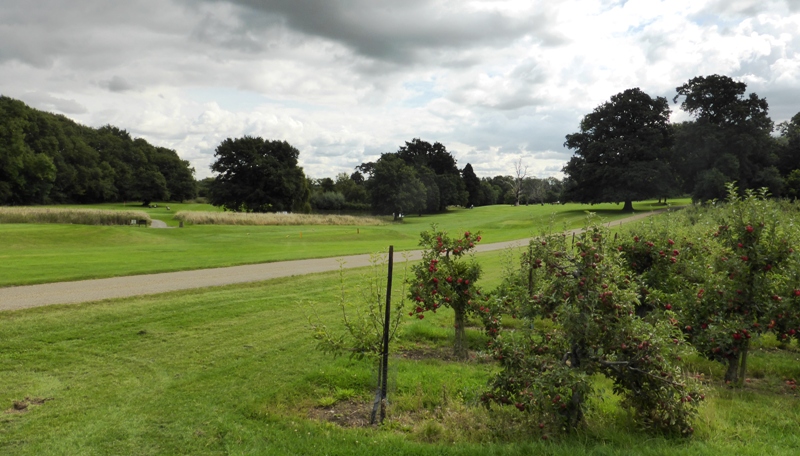
Sir John Starkey ensures his apples stay on the tree until their flavour is fully developed
"Because my apples are picked when they are fully mature, they have soaked up more weeks of autumn sunshine and absorbed more goodness from the Southwell keuper marl clay, which is the characteristic of the land where the original Bramley tree still stands. This results with my apples having that perfect Bramley blush, distinct texture and extraordinary taste. And all without adding anything artificial"
Below: Sir John Starkey - and Suzannah Starkey in a Cox orchard
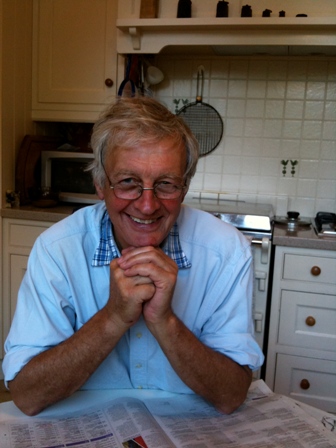
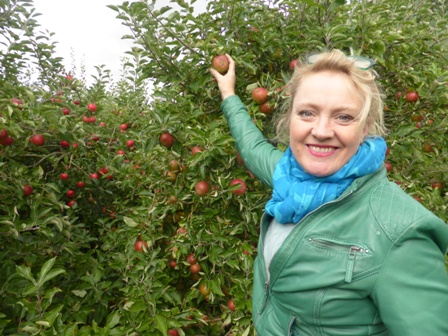
Below: a Discovery tree - and Discovery apples at Norwood Park farm
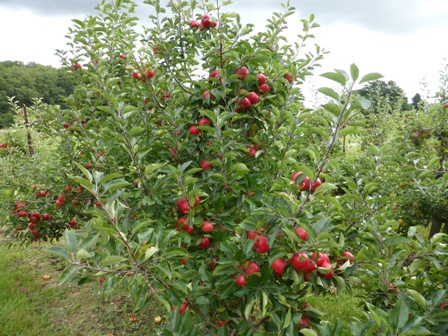
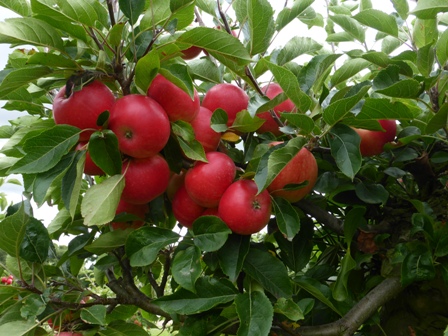
Below: Starkey's most recent planting is a new Cox Orange Pippin orchard
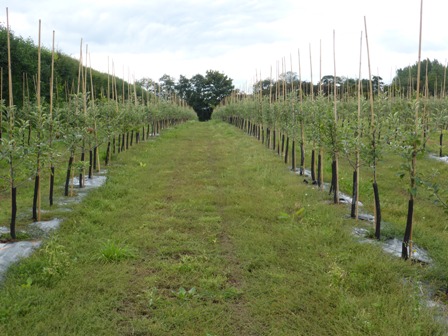
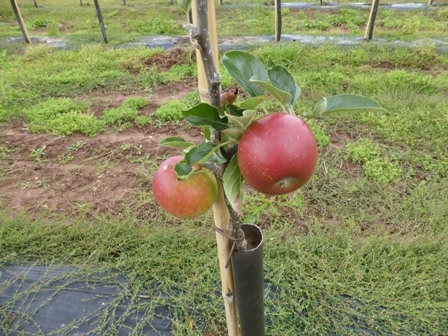
Below: An older Bramley orchard at Starkey's - and - Bramley Apples
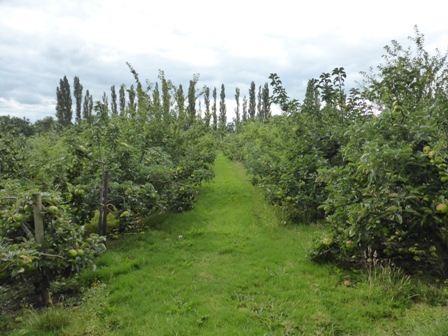
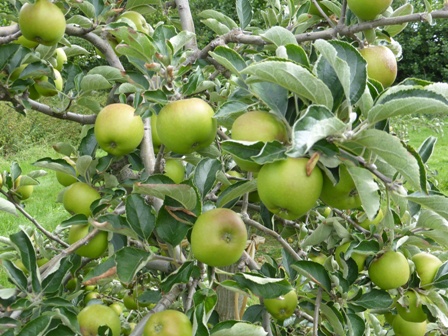
To celebrate the Bicentennial of the original Bramley tree which survives in a private garden in Southwell, John Starkey planted young Bramley trees which were created by tissue culture taken from the original tree, and then grown on their own roots.
In an extract from Nottingham University website, the process is explained;
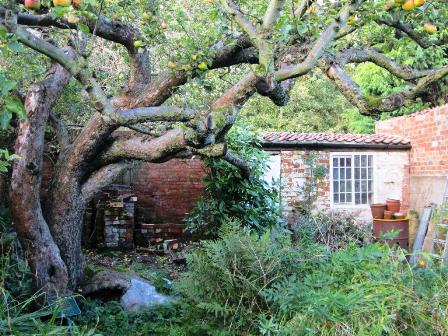 "Bramley trees growing today are all grafted cuttings of grafted cuttings taken over many generations, the majority have little connection with the original tree. A mutational change in any one accession will have been perpetuated countless times into modern-day Bramley trees. This could have led to subtle changes in fruiting and fruit quality, so producing an inferior apple.
"Bramley trees growing today are all grafted cuttings of grafted cuttings taken over many generations, the majority have little connection with the original tree. A mutational change in any one accession will have been perpetuated countless times into modern-day Bramley trees. This could have led to subtle changes in fruiting and fruit quality, so producing an inferior apple.
"For Bramley, along with most woody fruit and non-fruit species, propagation by striking cuttings does not work. To create a true clone of the tree, tissue culture based technology is required. In every cell nucleus the DNA holds all the information necessary to convert the cell back in the whole plant, provided the cell is placed in a suitable growth medium.
"Shoot tips were taken from the original Bramley tree in the spring of 1990. These were cut into smaller pieces and treated to eliminate all bacteria, fungi and fungal spores which are always present, particularly in an old tree like the original Bramley.
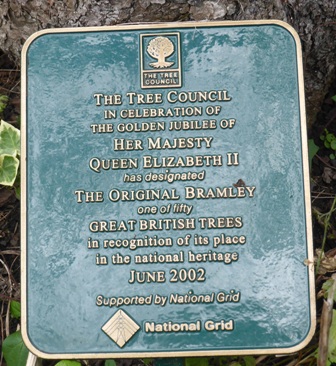 "The inactive leaf buds were then removed and placed in a liquid nutrient growth medium, changing to fresh medium every four weeks. When the individual roots reached 3cm they were ready for rooting in a new growth medium. These rooted clones were then transferred to soil in a mist propagator and then to an open glasshouse.
"The inactive leaf buds were then removed and placed in a liquid nutrient growth medium, changing to fresh medium every four weeks. When the individual roots reached 3cm they were ready for rooting in a new growth medium. These rooted clones were then transferred to soil in a mist propagator and then to an open glasshouse.
"This tissue culture approach to preserving the original Bramley tree has not only generated cloned trees which produce fruit, but also allows for the indefinite preservation of Bramley shoots. Currently, several hundred have been maintained and rooted and grown on as necessary. Since the cloned trees are on their own root systems (as distinct from those grafted onto a dwarfing root stock) they grow extremely rapidly, reaching heights of six to eight feet in under two years.
"Professor Ted Cocking of the School of Biology carried out the cloning work with his colleague Dr Brian Power. He said: "Being able to clone the original Bramley apple tree is a wonderful example of how plant biotechnology has helped us to preserve for ourselves and future generations what was a gift of nature, the original Bramley apple."
To see a full account of the tissue culture technique - Click on Nottingham University Bramley
Sir John Starkey discovered that Bramley apples picked at their maturity when grown from their own root can be enjoyed cooked, or in a compote, without the need for adding sugar. For a cooking apple this is extraordinary!
Below: The Bicentennial Orchard at Starkey's
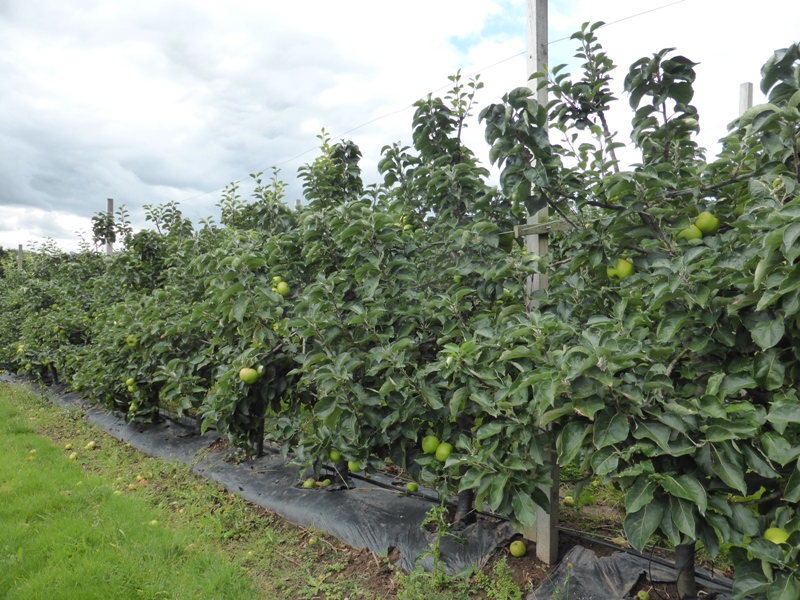
Suzannah showed me the 'soft fruit' production area where Starkey's grow more than 400 tons of strawberries and 50 tons of blackberries
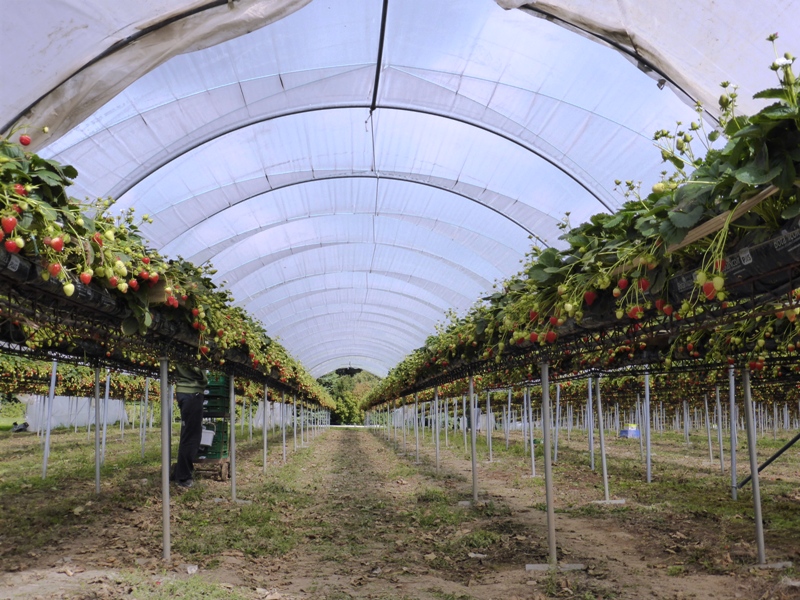
Below: Starkey's grow Eve's Delight and Sweet Evie at Norwood Park
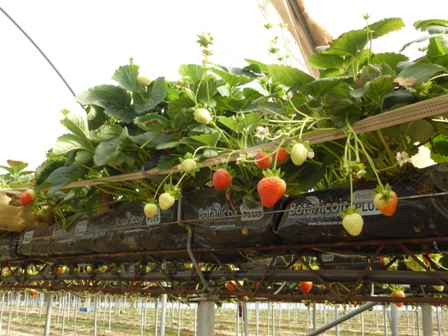
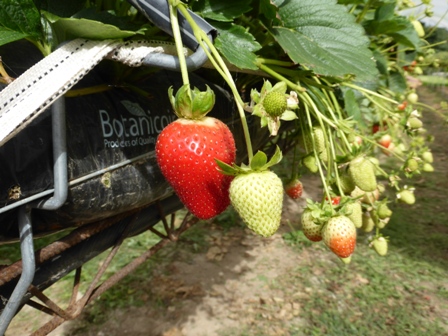
Suzannah pointed out the 'visual' difference between Eve's Delight and Sweet Evie; Eve's Delight has flatter surface, i.e. less indented seeds than Sweet Eve..
Below: Suzanna with Eve's Delight and Sweet Evie - and - Suzannah showing the difference between the two varieties
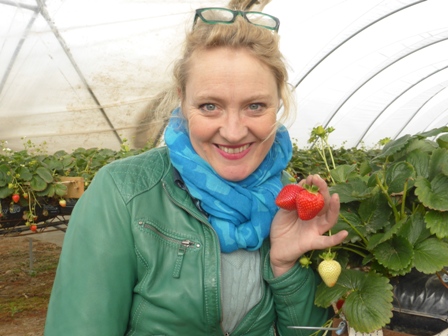
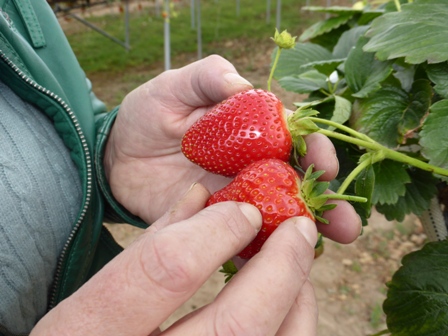
Below: Suzannah in a Blackberry Tunnel
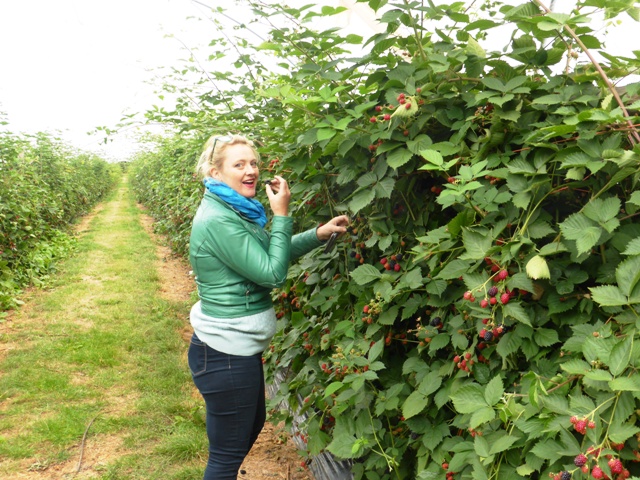
Below: Loch Ness Blackberries
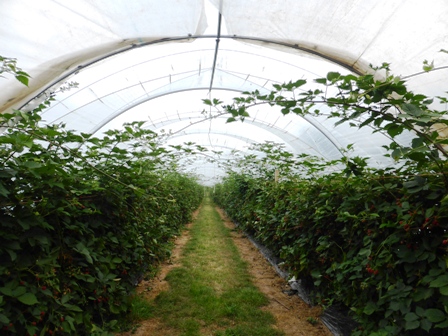
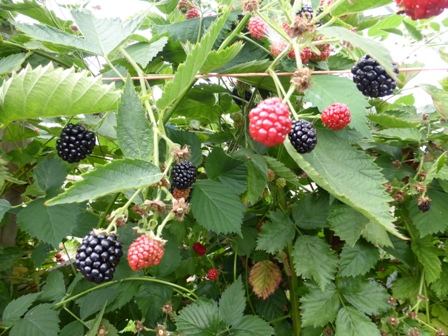
Below: Loch Ness Blackberries - superb size, quality and taste!
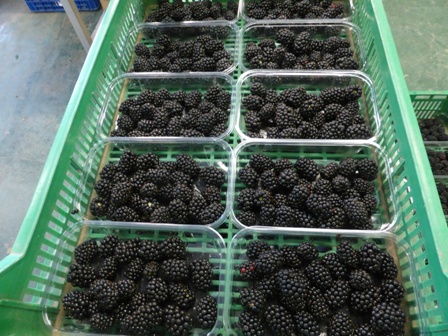
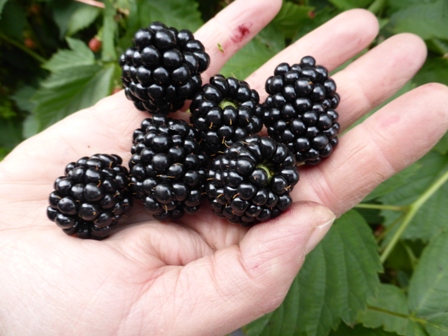
Before I left Nottinghamshire, I made a short visit into Southwell with Suzannah Starkey; on the way we saw a Horse and Cart being driven through the town, setting the atmosphere of a bygone age. The original Bramley tree is in a private garden and it would have been invasive without the owners permission to take a look, however the Bramley Pub nearby and blue plaques ensure Southwell's most famous tree is not forgotten.
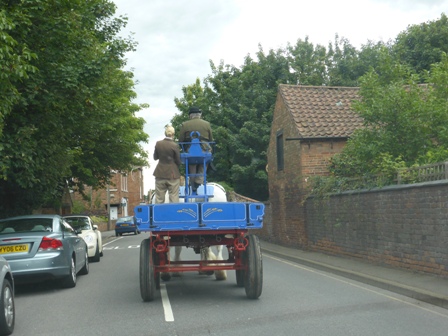
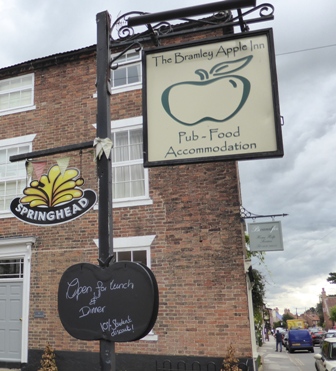
Below: The Bramley Apple Pub
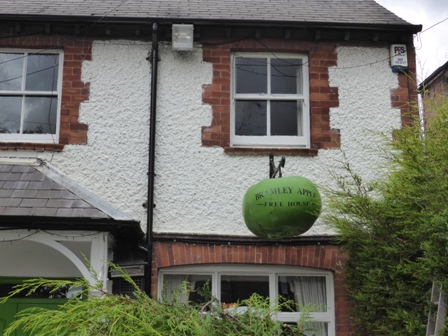 My visit to Starkey's was a privilege; Suzannah Starkey is blessed with enormous enthusiasm; her passion for the produce and products created on the farm - fresh fruit, fruit juices, jams, compote, frozen fruit......is boundless.
My visit to Starkey's was a privilege; Suzannah Starkey is blessed with enormous enthusiasm; her passion for the produce and products created on the farm - fresh fruit, fruit juices, jams, compote, frozen fruit......is boundless.
Suzannah has so many good ideas for extending the products of the farm and recently gained S.A.L.S.A. - Safe And Local Supplier Accreditation - passing with flying colours.
I was fortunate to meet Suzannah's father, Sir John Starkey while we were touring the farm; he is the most charming and eloquent man and in our conversation exuded his passion for growing and the countryside he lives in. The estate income is supported by the use of Norwood Park as an events venue and the Golf Course, but my feeling is those activities are only there to support Sir John's love of living and working in one of Nottinghamshire's most beautiful areas.
To complete this week's English Apple Man Journal - take a look at The Bramley Apple Man Starkey's website.
That is all for this week..........
Take care
The English Apple Man